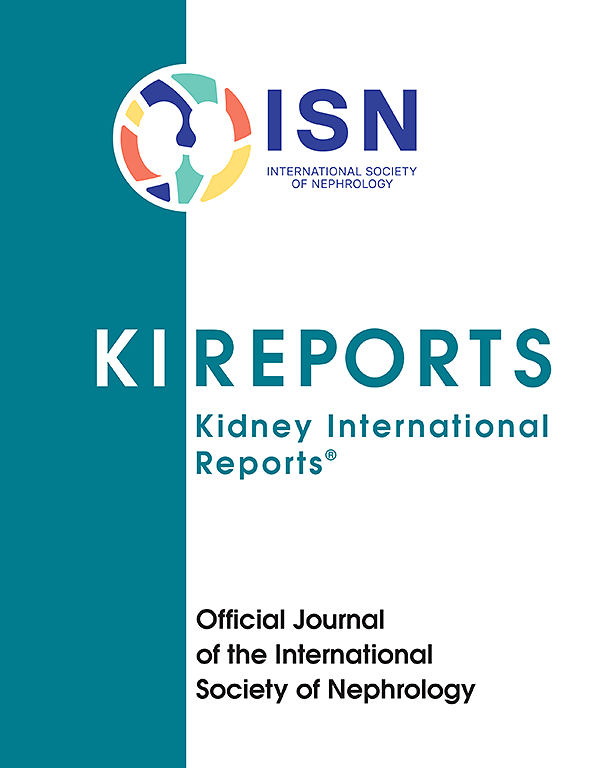Blood Pressure Goals and Outcomes in Kidney Transplant Recipients in an Analysis of the Collaborative Transplant Study
IF 5.7
2区 医学
Q1 UROLOGY & NEPHROLOGY
引用次数: 0
Abstract
Introduction
Hypertension is an independent risk factor for cardiovascular disease, the leading cause of death in kidney transplant recipients. However, optimal blood pressure targets posttransplant remain uncertain. We investigated the impact of different American College of Cardiology and the American Heart Association (ACC/AHA) blood pressure categories on graft survival and patient mortality, and analyzed subgroup-specific effects.
Methods
This large-scale retrospective study included 1-year blood pressure data from 62,556 kidney transplant recipients across 209 centers in 39 countries, using the collaborative transplant study (CTS) database. Primary outcomes were death-censored graft failure and patient mortality during first 6 years posttransplantation. Multivariable Cox regression analysis controlled for multiple immunological and nonimmunological confounders.
Results
At 1 year posttransplant, 77% of kidney transplant recipients had hypertension. We did not find a significant difference in death-censored graft failure and patient mortality between patients with normal blood pressure (< 120/< 80 mm Hg) and those with elevated blood pressure (120–129/< 80 mm Hg). Hypertension stages 1 (130–139/80–89 mm Hg) and 2 (≥ 140/≥ 90 mm Hg) were associated with an 11% and 55% increased risk of death-censored graft failure, respectively. Patient mortality was only significantly increased in those with hypertension stage 2. Kidney transplant recipients with hypertension stage 2 continued to have an increased risk of graft failure, even when they achieved normal blood pressure in the second year posttransplant. Certain subgroups of patients were at particularly high risk of detrimental effects of high blood pressure.
Conclusion
This study highlights the negative impact of hypertension early after kidney transplantation and emphasizes the importance of effective treatment to improve long-term graft and patient survival.

导言高血压是心血管疾病的独立危险因素,也是肾移植受者死亡的主要原因。然而,移植后的最佳血压目标仍不确定。我们研究了美国心脏病学会和美国心脏协会(ACC/AHA)不同血压类别对移植物存活率和患者死亡率的影响,并分析了亚组特异性影响。这项大规模回顾性研究利用合作移植研究(CTS)数据库,纳入了 39 个国家 209 个中心 62,556 名肾移植受者的 1 年血压数据。研究的主要结果是移植后前 6 年中死亡剪除的移植失败和患者死亡率。多变量 Cox 回归分析控制了多种免疫和非免疫混杂因素。结果移植后 1 年,77% 的肾移植受者患有高血压。我们没有发现血压正常(< 120/< 80 mm Hg)和血压升高(120-129/< 80 mm Hg)的患者在死亡校正后的移植失败和患者死亡率方面有明显差异。高血压 1 级(130-139/80-89 mm Hg)和 2 级(≥ 140/≥ 90 mm Hg)分别导致死亡--计算移植物失败的风险增加 11% 和 55%。只有高血压2期患者的死亡率才会明显增加。高血压 2 期的肾移植受者即使在移植后第二年血压恢复正常,移植失败的风险仍会增加。结论这项研究强调了肾移植后早期高血压的负面影响,并强调了有效治疗对提高移植物和患者长期存活率的重要性。
本文章由计算机程序翻译,如有差异,请以英文原文为准。
求助全文
约1分钟内获得全文
求助全文
来源期刊

Kidney International Reports
Medicine-Nephrology
CiteScore
7.70
自引率
3.30%
发文量
1578
审稿时长
8 weeks
期刊介绍:
Kidney International Reports, an official journal of the International Society of Nephrology, is a peer-reviewed, open access journal devoted to the publication of leading research and developments related to kidney disease. With the primary aim of contributing to improved care of patients with kidney disease, the journal will publish original clinical and select translational articles and educational content related to the pathogenesis, evaluation and management of acute and chronic kidney disease, end stage renal disease (including transplantation), acid-base, fluid and electrolyte disturbances and hypertension. Of particular interest are submissions related to clinical trials, epidemiology, systematic reviews (including meta-analyses) and outcomes research. The journal will also provide a platform for wider dissemination of national and regional guidelines as well as consensus meeting reports.
 求助内容:
求助内容: 应助结果提醒方式:
应助结果提醒方式:


